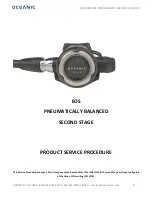
Section 14: SCPI command reference
Model 6517B Electrometer Reference Manual
14-72
6517B-901-01 Rev. C / August 2015
:STATe <b>
This command serves as the control reference for volts, amps, ohms, and coulombs.
Usage
[:SENSe[1]]:VOLTage[:DC]:REFerence:STATe <b>
[:SENSe[1]]:CURRent[:DC]:REFerence:STATe <b>
[:SENSe[1]:RESistance:REFerence:STATe <b>
[:SENSe[1]]:CHARge:REFerence:STATe <b>
:STATe?
<b>
1 or ON:
Enable reference
0 or OFF:
Disable reference
Details
These commands are used to enable or disable Reference for the specified function. When enabled,
the displayed reading includes the programmed reference value. When disabled, the displayed
reading does not include the reference value.
Also see
:REFerence <n>
(on page 14-71)
:ACQuire
(on page 14-72)
:ACQuire
This command is used to acquire the reference for volts, amps, ohms, and coulombs.
Usage
[:SENSe[1]]:VOLTage[:DC]:REFerence:ACQuire
[:SENSe[1]]:CURRent[:DC]:REFerence:ACQuire
[:SENSe[1]:RESistance:REFerence:ACQuire
[:SENSe[1]]:CHARge:REFerence:ACQuire
Details
When one of these commands is sent, the measured input signal is acquired and established as the
reference value. This command is typically used to zero the display. For example, if the instrument is
displaying a 1nA offset, sending this command and enabling Reference zeroes the display.
This command is functional only if the instrument is on the specified measurement function. Sending
this command while in any other function causes an error. Also, if the latest reading is overflowed
("OFLO") or a reading has not been triggered ("----"), an error occurs when this command is sent.
The
:ACQuire
command is coupled to the
:REFerence <n>
command. See the description for the
:REFerence <n>
(on page 14-71) command for details.
Also see
:REFerence <n>
(on page 14-71)
:STATe <b>
(on page 14-37)















































